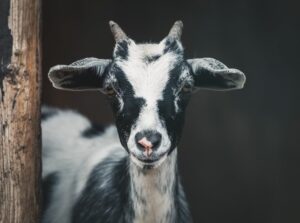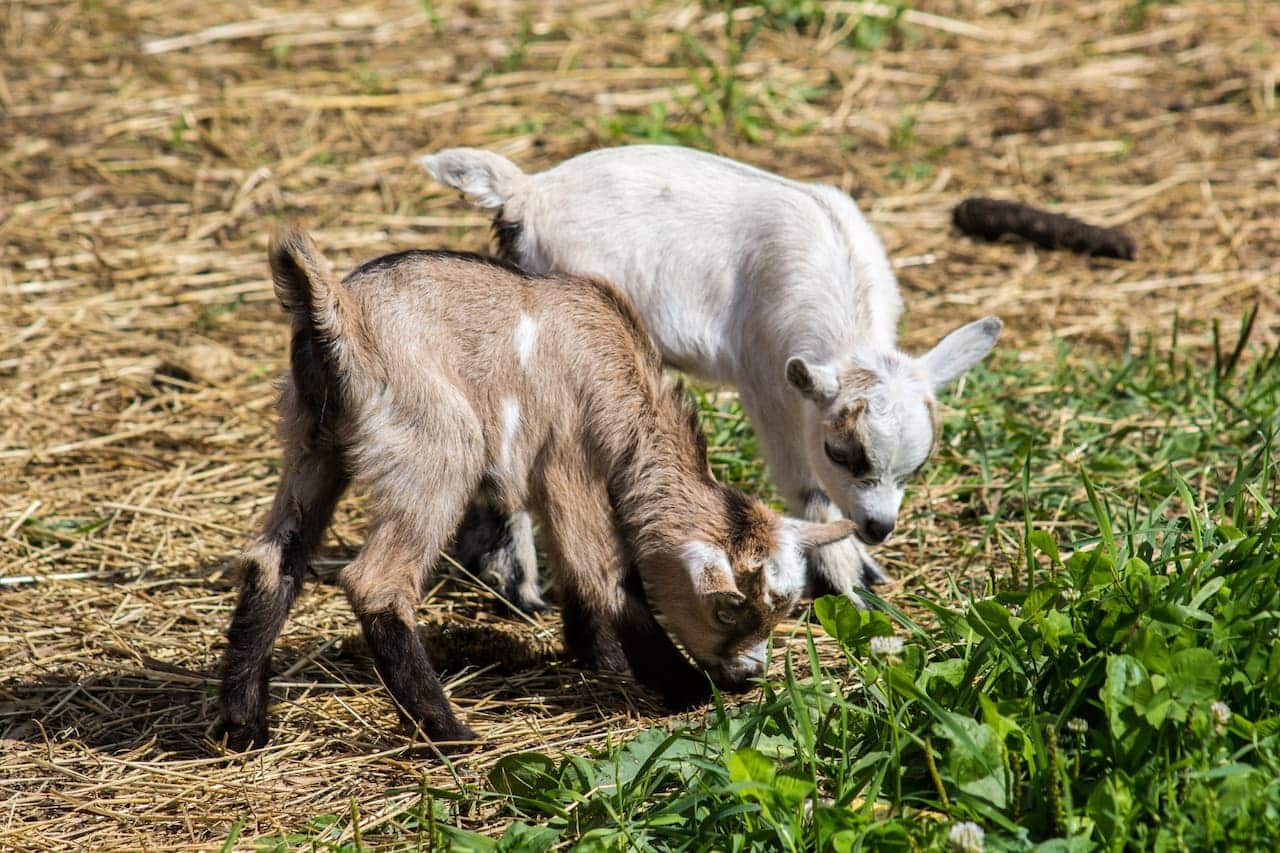Fainting Goats – Interesting Facts and Behavior
Do Fainting Goats Really Faint?
Fainting goats are a small breed of meat goat (heavily muscled). An average adult stands 17 to 25 inches tall and weighs 60 to 174 pounds. The breed’s eyes are prominent and set high in the sockets. While black and white is the most common fainting goat coat color, the breed comes in various color combinations. The hair can be long or short, but there is no angora strain of fainting goat.
What is the Habitat of Fainting Goats?
In the 1880s, fainting goats were introduced to Marshall County, Tennessee. They are now kept worldwide, though they are most common in the United States.
What is the Diet and Behavior of Fainting Goats?
Fainting goats, like other goats, are herbivores that feed on trees, shrubs, vines, and some broad leaf plants. While goats taste most objects to learn about, they do not eat everything. Nightshade plants and moldy feed could kill fainting goats.
Goats are social animals, but they form herds with other species of animals, such as sheep, and can form closer ties with humans. They are intelligent and capable of resolving simple puzzles. This breed, like other goats, is naturally curious.
How Reproduction Occurs in Fainting Goats?
Goats reach maturity between three and fifteen months, ideally when they have gained 70% of their adult weight. Females (does) enter estrus every 21 days and show their willingness to mate by wagging their tails vigorously. To increase odor, males (bucks) curl their top lip (flehmen response) and urinate on their forelegs and face. Gestation lasts approximately 150 days, with twins being the most common outcome.
What are the Causes of Fainting in Fainting Goats?
Myotonia congenita, also known as Thomsen’s disease, is an inherited muscle condition that causes all fainting goats. The genetic disorder is caused by a missense mutation in the CLCN1 gene, which reduces chloride ion conductance in muscle fiber chloride channels. When the goat is startled, its muscles tense and does not immediately relax, causing it to fall. Startling the goat, in particular, causes its ears and eyes to send an electrical signal to the brain, triggering the fight or flight response. When the reaction is activated, the brain decides whether to stay or flee and the voluntary muscles tense briefly.
The balancing act between positively charged sodium ions and negatively charged chloride ions is out of balance in myotonic goats, so muscles have enough sodium but not enough chloride to relax. The ion balance may take 5 to 20 seconds to resolve and the muscles to relax. The seriousness of the disorder varies depending on the individual, age, availability of water, and taurine supplementation.
Younger goats stiffen and fall more frequently than older goats, partly because mature individuals have adjusted to the disorder and are less easily startled. Based on what we know about myotonia congenita in humans, the condition is painless and does not affect muscle tone, consciousness, or life expectancy.
What Happens When a Fainting Goat Faints?
When something surprises or frightens fainting goats, they become unstable, their muscles stiff for a few seconds, and they fall over!
The reaction doesn’t hurt, and it’s not fainting. Usually, the animal stays awake and gets up once the stiffness goes away. Myotonia is a congenital genetic disorder that makes the goats’ skeletal muscles suddenly contract, especially in their back legs, and then slowly relax again. It’s interesting to note that this response to fainting goats isn’t just caused by fear. They sometimes faint because of excitement.
The difference is that all fainting goats have this disease since they have all been selectively bred. Many other animals, including horses, dogs, cats, and mice, suffer from this condition. Even in humans, myotonia congenital can develop.
How do you care for fainting goats?
Some breeders believe that caring for fainting goats is easier than caring for other goat breeds. To get started, you’ll need a few things to ensure your herd’s health and wellness. Fainting goats require a fenced pen, adequate shelter, food, fresh water, vaccinations, minerals and vitamins, and proper veterinary care (when necessary).
- Shelter
Your location will heavily influence the type of shelter you use. Everyone wants their own space where they can seek shelter from the elements and feel safe. Your fainting goats will require at the very least a basic shelter to keep them safe from the elements. Your herd will thrive if the shelter includes a relaxing area.
If you live in a colder climate, you should partially enclose the shelter to keep your herd safe and warm from the snow, sleet, and hail. The fainting goats’ shelter does not need to be elaborate; it simply needs to be strong enough to keep out the wind, rain, and snow.
- Food
Ruminants, or animals with four stomachs, are goats. The bacteria in each stomach process food, and the bacteria unlock the nourishment in the food for the goat. The accurate type of food and quantity to feed your fainting goats may differ from breeder to breeder, so consult your veterinarian for advice on the best diet to feed your animals.
Ruminants require a certain amount of roughage and fiber to keep food moving through their digestive tract. Goats tend to overeat, which can lead to health issues, so a balanced diet is essential.
- Vaccination
Vaccination against Clostridium perfringens C & D, rabies, and tetanus is recommended for fainting goats. Regarding vaccinations, it is best to consult your herd veterinarian about the proper timing, administration, and upkeep of your animals’ vaccinations. A veterinarian can advise you on food issues and best practices for keeping the herd’s hooves in good condition.
Is Fainting Harmful for Fainting Goats?
Fainting isn’t necessarily harmful to these goats. These goats don’t necessarily suffer injury when they faint. It doesn’t affect their nervous or cardiovascular systems; it just affects their muscles. The real threat is caused by fainting goats falling off high things when under a “spell.” To observe the reaction, people should be careful not to startle fainting goats, as it may make goats fall over. The continual startling of fainting goats is harmful!
What is the Cost of Fainting Goats?
A fainting goat can be purchased for $50 to $350, but the average price is around $100. Young fainting goats range in price from $300 to $500. A pet fainting goat costs between $50 and $100. It costs between $200 and $400 to faint a goat without a pedigree.





